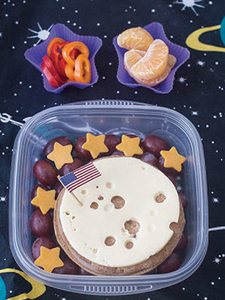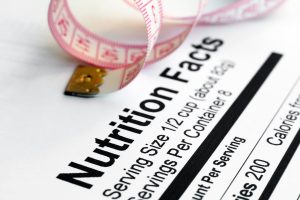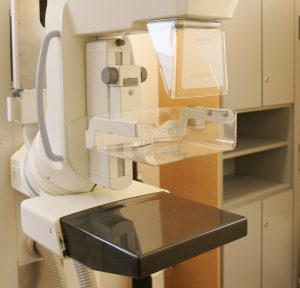Simple ideas to make healthy eating easier
(Family Features) When your family is transitioning back into a regular routine in the new year, it’s the perfect time to recommit to healthy eating habits throughout the day. Getting the whole family on board may be easier than you think – just keep the focus on flavor and fun.
If you’re short on ideas to jumpstart better family eating, try these tips:
Keep it simple. Busy families often rely on the convenience of boxed meals, but you can get the same easy, delicious meal in a much healthier way. Everything cooks in one pot for easy clean-up, and this Cheeseburger Mac recipe swaps ground beef for leaner ground turkey. Not only is this an easy weeknight dinner, but leftovers can be packed in a thermos for lunch on chilly days.
Have fun. Try using creative shapes, textures, and colors to make mealtime and lunchboxes more fun. Use cookies cutters to easily create butterflies, flowers, dinosaurs and more. Allow your kids to get involved in packing their own lunchboxes or helping with a meal. If your kids have a love of space or are learning about it in school, this bento box is definitely out of this world. Grapes create the dark backdrop while Swiss cheese is the perfect place for a moon landing. Clementine crescent moons and mini sweet pepper planet rings round out the meal.
Make a family promise. To keep the momentum going, rely on a resource like the Power Your Lunchbox Promise website, which offers everything from healthy lunchbox ideas to after-school snacks and dinners. All meal ideas have been approved by a registered dietitian, meet USDA guidelines and are kid-friendly. What’s more, for every Power Your Lunchbox Promise made on the website, health-conscious companies supporting the initiative will make a $1 donation to Feeding America’s programs that support families and children. Learn more at poweryourlunchbox.com.
Cheeseburger Mac
Recipe courtesy of Produce for Kids
1 tablespoon olive oil
1 pound lean ground turkey
1 small onion, finely chopped
1 cup mini sweet peppers, chopped
1 1/2 teaspoons paprika
1 teaspoon sugar
1/2 teaspoon salt
1/2 teaspoon chili powder
1 1/2 cups water
1 cup milk
3 tablespoons tomato paste
1 1/2 cups whole-grain dry macaroni
1 cup shredded low-fat cheddar cheese
In a large skillet over medium-high heat, heat oil. Add turkey, onion, and peppers. Cook 7-10 minutes, or until turkey is cooked through.
In a small bowl, mix paprika, sugar, salt and chili powder. Add to turkey and stir. Add water, milk, tomato paste, and pasta. Mix well. Bring to boil, reduce heat and simmer 10 minutes, or until pasta is cooked and liquid is absorbed. Remove from heat and top with cheese.
Space Exploration Bento Box
Recipe courtesy of Produce for Kids
1/2 cup red seedless grapes
1 whole-wheat sandwich round
2 slices low-sodium deli-sliced turkey
1 slice Swiss cheese
1/2 slice low-fat cheddar cheese
1 clementine, peeled and segmented
3 mini sweet peppers, sliced into rings
1 package freeze-dried fruit
Add grapes to bottom of a large section of bento box to create space background. Place bottom of the sandwich round on top, add turkey and sandwich round top.
Lay Swiss cheese on cutting board. Using a small bowl or other round objects, cut into a circle. Place on top of the sandwich to create a moon.
Lay cheddar cheese on cutting board. Using small star cookie cutter, cut out stars. Add to space around moon.
Pair with clementine “crescent moons,” pepper “planet rings” and freeze-dried fruit.







 Once your goals are set, it’s time to address nutrition. Diet is the most important component to fat loss (80-90 percent) and we’re not talking about fads and trends. Your diet is your eating lifestyle, which you should be able to maintain all year-round. The only thing you should change about it is the amount of calories consumed, based on what your goals are.
Once your goals are set, it’s time to address nutrition. Diet is the most important component to fat loss (80-90 percent) and we’re not talking about fads and trends. Your diet is your eating lifestyle, which you should be able to maintain all year-round. The only thing you should change about it is the amount of calories consumed, based on what your goals are. 

 The most common breast cancer screening test used for early detection is a mammogram, which is a low-dose x-ray of the breast that looks for changes in tissue that could indicate breast cancer. There are two types of mammograms, a screening mammogram and a diagnostic mammogram.
The most common breast cancer screening test used for early detection is a mammogram, which is a low-dose x-ray of the breast that looks for changes in tissue that could indicate breast cancer. There are two types of mammograms, a screening mammogram and a diagnostic mammogram. 
 1. Garlic
1. Garlic